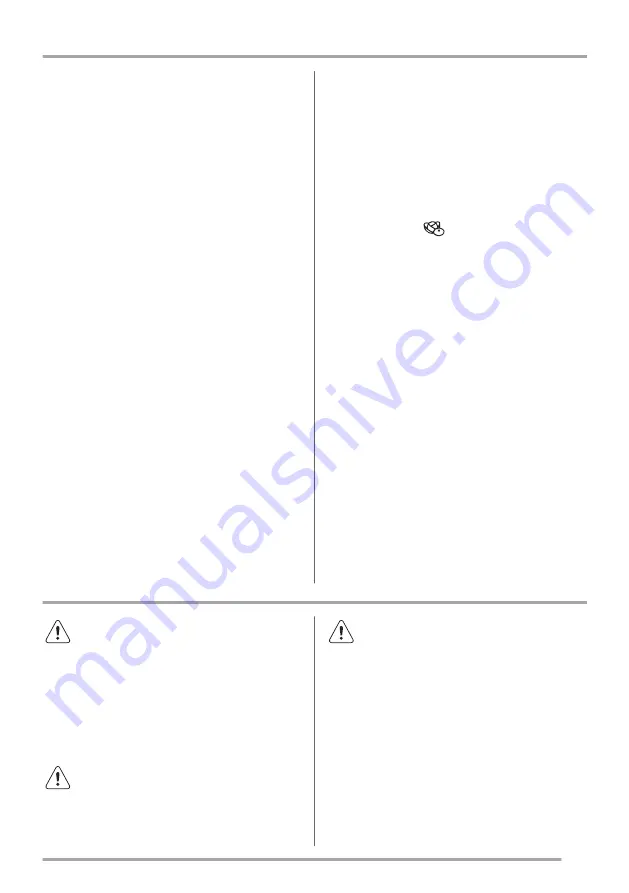
Hints and tips
Hints for energy saving
• Most efficient use of energy is ensured in the
configuration with the drawers in the bottom part of
the appliance and shelves evenly distributed.
Position of the door bins does not affect energy
consumption.
• Do not open the door frequently or leave it open
longer than necessary.
• Do not set too high temperature to save energy
unless it is required by the characteristics of the
food.
• If the ambient temperature is high and the
temperature control is set to low temperature and
the appliance is fully loaded, the compressor may
run continuously, causing frost or ice formation on
the evaporator. In this case, set the temperature
control toward higher temperature to allow
automatic defrosting and to save energy this way.
• Ensure a good ventilation. Do not cover the
ventilation grilles or holes.
Hints for fresh food refrigeration
• The medium temperature setting ensures good
preservation of fresh food.
Higher temperature setting inside the appliance may
lead to shorter shelf life of food.
• Cover the food with packaging to preserve its
freshness and aroma.
• Always use closed containers for liquids and for
food, to avoid flavours or odours in the
compartment.
• To avoid the cross-contamination between cooked
and raw food, cover the cooked food and separate it
from the raw one.
• It is recommended to defrost the food inside the
fridge.
• Do not insert hot food inside the appliance. Make
sure it has cooled down at room temperature before
inserting it.
• To prevent food waste the new stock of food should
always be placed behind the old one.
Hints for food refrigeration
• Fresh food compartment is the one marked (on the
rating plate) with
.
• Meat (all types): wrap in a suitable packaging and
place it on the glass shelf above the vegetable
drawer. Store meat for at most 1-2 days.
• Fruit and vegetables: clean thoroughly (eliminate the
soil) and place in a special drawer (vegetable
drawer).
• It is advisable not to keep the exotic fruits like
bananas, mangos, papayas etc. in the refrigerator.
• Vegetables like tomatoes, potatoes, onions, and
garlic should not be kept in the refrigerator.
• Butter and cheese: place in an airtight container or
wrap in an aluminium foil or a polythene bag to
exclude as much air as possible.
• Bottles: close them with a cap and place them on
the door bottle shelf, or (if available) on the bottle
rack.
• Always refer to the expiry date of the products to
know how long to keep them.
Care and cleaning
Warning! Refer to Safety chapters.
Cleaning the interior
Before using the appliance for the first time, the interior
and all internal accessories should be washed with
lukewarm water and some neutral soap to remove the
typical smell of a brand-new product, then dried
thoroughly.
Caution! Do not use detergents,
abrasive powders, chlorine or oil-based
cleaners as they will damage the finish.
Caution! The accessories and parts of
the appliance are not suitable for
washing in a dishwasher.
Periodic cleaning
The equipment has to be cleaned regularly:
1. Clean the inside and accessories with lukewarm
water and some neutral soap.
2. Regularly check the door seals and wipe them
clean to ensure they are clean and free from
debris.
3. Rinse and dry thoroughly.
9










































